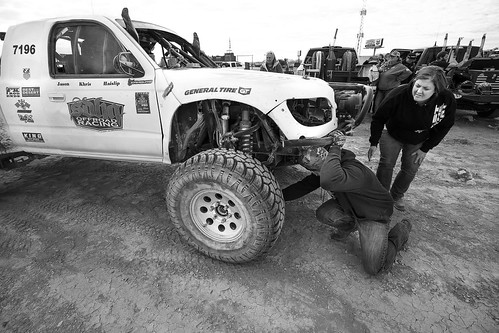J have been drastically far more likely to hunt than these with out him.
J have been drastically far more likely to hunt than these with no him. Trend lines are for illustrative purposes onlydata have been analysed at the amount of the encounter working with a generalized linear model for binomial distributions (see text for specifics). Table 2. GLMs of group hunting probability. In all 3 communities, there was a strong good association amongst hunting probability and also the quantity of adult males present at a red colobus encounter. At Mitumba, there was an further optimistic effect of adult purchase Maytansinoid DM1 females on hunting likelihood. At Kanyawara, hunts have been substantially much less probably to take place if a minimum of swollen female was present. Bold italics indicate parameters that have been statistically substantial (p , 0.05). community Kanyawara parameter males females swollen females (Y) Kasekela males females swollen females (Y) Mitumba males females swollen females (Y) estimate 0.39 0.03 20.72 0.08 0.02 20. 0.54 0. 20.25 odds ratio .48 .03 0.49 .08 .02 0.90 .72 .2 0.78 s.e. 0.03 0.03 0.9 0.02 0.0 0.two 0. 0.04 0.two Z two.67 0.93 23.7 4.64 .47 20.98 5.5 two.eight 2.2 pvalue 0.000 0.35 0.0002 0.000 0.four 0.32 0.000 0.005 0.for any from the age categories among 6 and 40 years old (GLMM, all p 0.05). All males older than 5 have been more likely to hunt than males in the younger categories (all p 0.05). Finally, males inside the 40age group have been drastically much less most likely PubMed ID:https://www.ncbi.nlm.nih.gov/pubmed/22029416 to hunt than 25 and 260yearolds ( p 0.05). In brief, at Kanyawara, males began to participate in hunts at maximum rates involving the ages of 6 and 20, then showed a decline immediately after age 40. At all ages for which there had been data, AJ exhibited drastically larger (36 2 higher) hunting probability than the typical male in the identical age class (figure 2a, strong circles). MS (figure 2a, open triangles) exhibited higher hunting probability than the imply at ages 225 and 26 0, but showed typical rates at age three five, suggesting a decline in hunting interest as a postprime male. Therefore, we classified AJ as an effect hunter for all ages with data, and MS for ages 230 only. You will discover no information for either AJ or MS for agecategory 60 or younger, as colobus encounter data before 996 are not out there.(ii) KasekelaSimilar to Kanyawara, 25yearold Kasekela males had the highest hunting probability (figure 3a), but this value (0.3) was reduced than at Kanyawara (0.52). Males in this age category had been considerably a lot more most likely to hunt than males in all other age categories (all p , 0.003) except 60yearolds ( p 0.20). The youngest (60) and oldest (360, four males were least most likely to hunt. Once more, equivalent to Kanyawara, 60yearold males have been equally probably to hunt as males up to 30 years old. Right after 30, there was a significant decline in hunting probability. By age 36, males hunted in the very same prices as 60yearolds. On the six potential influence hunters identified earlier, ZS, PX and SL by no means exhibited hunting probabilities that were greaterTable 3. Summary of effect hunter analyses. For each chimpanzee listed, there was a significant, optimistic association involving their presence at a colobus encounter plus the probability that a hunt occurred. Bold italics kind indicates those that consistently had above average hunting prices for their age and were hence classified as influence huntersmunity 996 996 99 976 988 989 995 2005 2000 203  200 0.69 (22039) 0.62 (48238) 0.49 (323) 0.37 (88235) 203 203 0.70 (763093) 0.69 (48695) 0.54 (309567) 0.54 (309567) 203 0.69 (76408) 0.56 (350620) .28 .39 .45 .86 .72 982 0.75 (226) 0.55 (623) 3.3 200 203 0.9.
200 0.69 (22039) 0.62 (48238) 0.49 (323) 0.37 (88235) 203 203 0.70 (763093) 0.69 (48695) 0.54 (309567) 0.54 (309567) 203 0.69 (76408) 0.56 (350620) .28 .39 .45 .86 .72 982 0.75 (226) 0.55 (623) 3.3 200 203 0.9.